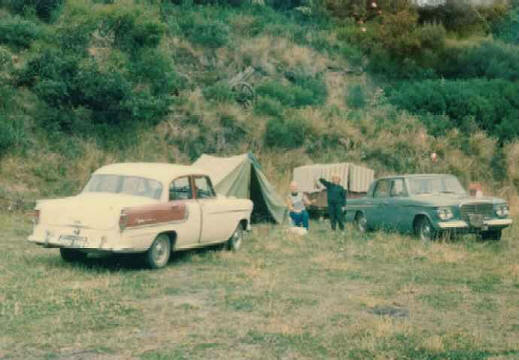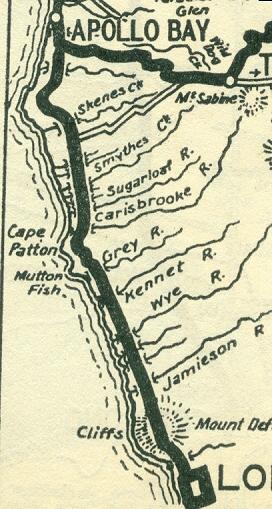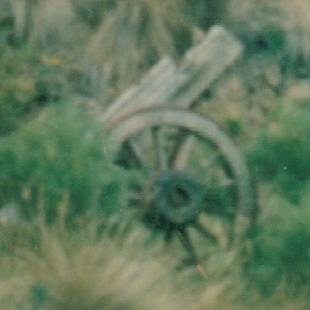doug's
camper trailer 1962
by Tanya
Barnet

Great
Ocean Road
Campertailers.org
members, are providing me with a lovely trip down memory lane by
sharing their journey in making their own camper trailer. Innovative
and creative people, just like my parents.
As a child, holidays
equalled camping ! Our upgrade to luxury came about by discomfort.
Our parents were sleeping in the Vanguard wagon but it was becoming
too uncomfortable and too difficult to quickly set up our camp. So
between them, Dad and Mum designed and built the camping trailer.
Dad was an engineer, a
motor mechanic, a welder, a draughtsman and a business owner, a jack
of all trades. (Weren’t they all back then?) Mum was a bean counter
by day and a creative artist by night (Mums still are !)
The back shed became the
production line where Dad cut all the steel, (frame, box channel
chassis, supports and panels) and welded the bits ‘n pieces
together. I recall the axle and wheels came from GM-H, I wonder if
the leaf springs did too? Mum sourced the canvas, designed and sewed
the cover (tent section) and set up the interior. A removable steel
frame provided support for the canvas cover. They used their inner
spring mattress from home which was placed on the base of the
trailer and the rest of the camping gear was placed on top. The unit
was towed as is, I can only imagine the stress on the canvas.
Amazing, but rain never penetrated the interior.

Sugar
Loaf Creek
Map courtesy of “The Herald Road
Guide” (4 shillings)
The photograph above depicts the Sugar Loaf River (creek) lay
off area on the Great Ocean Road. You can see from the map, the
Sugar Loaf River is located just off Cape Patton.
At Sugar Loaf Creek we
were totally self sufficient. Fish, ocean and trout were abundant,
eels and the occasional rabbit joined the cooking pot. Damper or
white very crusty bread was cooked in the blackened camp oven that
served just about every meal. Fresh vegetable produce consisted of
carrots and potatoes. Toast was created on a long, long, fork held
over the camp fire. Milk came tinned, dehydrated or condensed. Fresh
water was from the creek. A topless Kero tin with fencing wire
bridging the top was used to boil up the sand crabs, crayfish and
our hot water. When not using the open fire to cook, a single burner
pressure stove was used. At night we used a pressure kerosene lamp
with a fragile mantle. The lamp was so bright it would light up the
hillside behind the camp and highlight the old wheel on the
overgrown track.

train
wheel
I presume
the wheel was associated with some sort of past mining use. Spooky
for my sister and I, especially if the wild goats happened to be
enjoying some nocturnal grazing in the area. Kids will see shadows
move every time!
Today I
am still an incurable camper “trailerer”. In comparison the Jayco
Lark is sheer luxury! Why, I even have my very own rechargeable,
water proof 6 volt torch !
thanks to Tanya for sharing her memories with us
june 2009
|